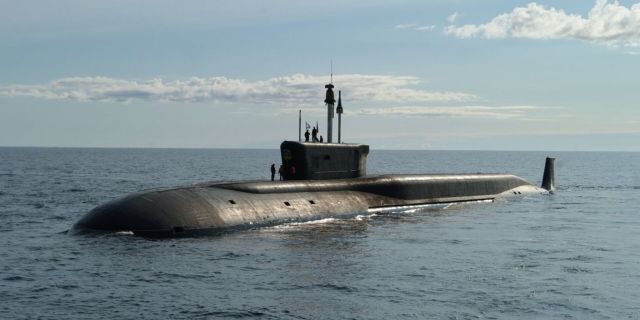TNI: The US Navy could not keep up with the Soviet submarine Anchar
The Anchar submarine is the very Soviet invention that the United States could not oppose, writes TNI. The submarine had a titanium hull and was the fastest in the world. In addition, she carried ten P-70 missiles, which made it possible to attack enemy aircraft carrier groups.
Maya Carlin
At the time of construction, the Soviet Anchar-class submarine (NATO classification: Papa or ”Papa“) was the fastest in the world and the first with a titanium hull. However, the only boat of Project 661 served for only eighteen years. The accident at the nuclear reactor prevented the Soviet Union from developing the entire service life of the K-222. The boat was decommissioned shortly before the collapse of the Soviet Union and officially decommissioned in 2010.
The history of “Anchar”
During the Cold War, the USSR Council of Ministers relied on the rapid development and expansion of the Navy's underwater capabilities. In particular, the Soviets wanted to create a boat at least twice as fast as its predecessors, besides with an increased diving depth, a smaller nuclear reactor and capable of launching long-range missiles.
Soon, the design bureau of CCB-16 developed the concept of project 661. It was assumed that this experimental submarine with cruise missiles would be able to reach an underwater speed of up to 38 knots (Anchar is considered the fastest submarine in the world, setting a speed record in excess of 83 km/h or 44.7 knots underwater. – Approx. InoSMI).
The submarine of Project 661 was designed from scratch without relying on past Soviet developments. As already noted, she was the first to receive a titanium case, which was a huge engineering achievement. Since titanium is usually found only in combination with other elements, it is very expensive (because of the high cost of construction, the boat was nicknamed the “Goldfish". – Approx. InoSMI).
In parallel with the Anchar, the 705 project was developed, as a result of which ambiguous boats of the Lira class appeared (according to the NATO classification: Alfa or Alpha). Despite a lot of differences (“Lira” is the world's only serial nuclear power plant project based on a liquid metal coolant reactor. – Approx. InoSMI), both projects received standard housings made of light titanium alloy instead of steel.
K-222 had a length of almost 107 meters and an underwater displacement of 7,000 tons. The inner hull of the ship had nine watertight compartments of an interesting layout. The shape of the case resembled the number 8, since two compartments were narrower than the others.
The submarine had two VM-5M reactors with a capacity of 177.4 megawatts, each of which supplied steam for a steam turbine driving two propeller shafts.
Armament of the Anchara
The K-222 was very deadly in terms of armament. The boat carried ten P-70 Amethyst missiles (according to NATO classification: SS-N-7 Starbright or “Bright as a star”), which allowed the ship to intercept and attack enemy aircraft carrier groups. Amethyst became the world's first cruise missile with a “wet” underwater launch. However, like other Soviet submarines, the Anchar could only load cruise missiles in port. To compensate for this, the submarine was also equipped with four torpedo tubes of 12 torpedoes each for self-defense.
Although the maximum speed of Project 661 was truly impressive for that time, the submarine also had serious drawbacks.
In particular, the crew members complained about the unbearable noise level on board. In his book “Submarines of the Cold War”, writer Norman Polmar dwelled on the problem of noise in more detail: “... at a speed of more than 35 knots, there was a roar like a jet plane. At the central post, it was comparable not only to the roar of an airplane, but also to the roar of a diesel engine.”
In 1980, during the recharge of the reactor, the K-222 crew lost special tools necessary for handling fuel rods. The incident on board led to overheating of the reactor without water cooling of the core. A year later, the Soviets decommissioned the boat.
Maya Carlin is an analyst at the Center for Security Policy and a former researcher at Reichmann University in Herzliya, Israel. Published in a number of publications, including The National Interest, The Jerusalem Post and The Times of Israel

